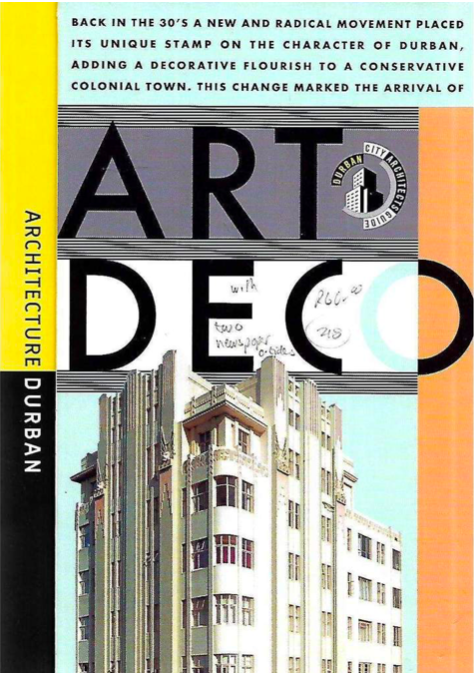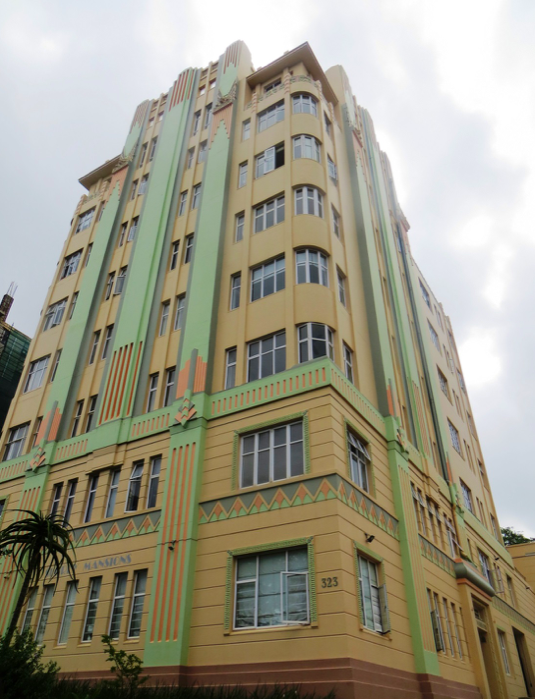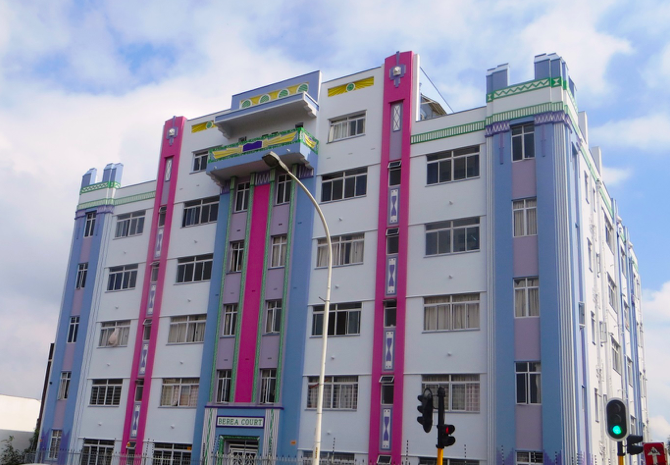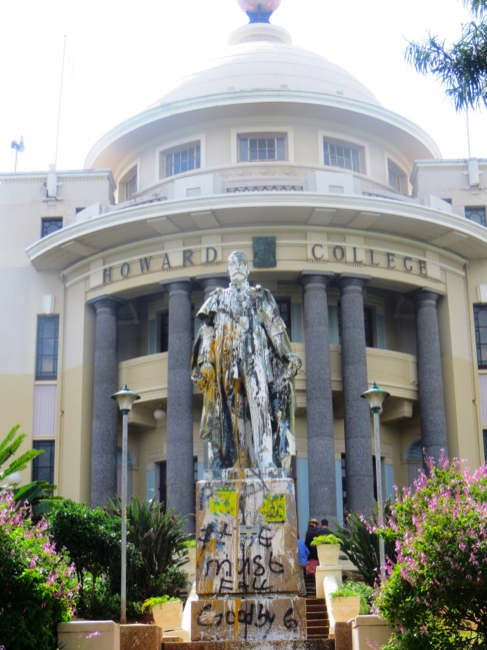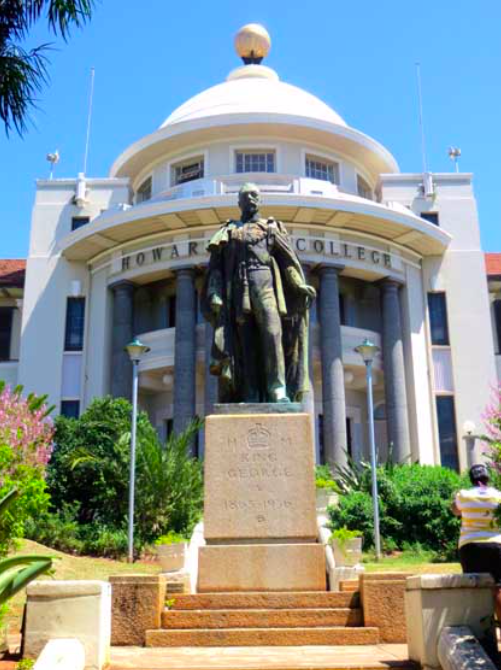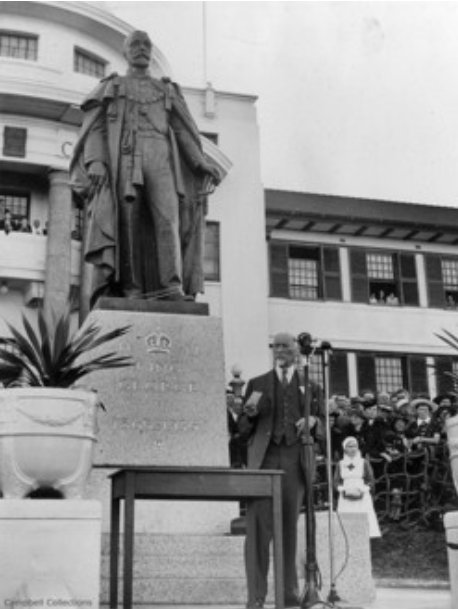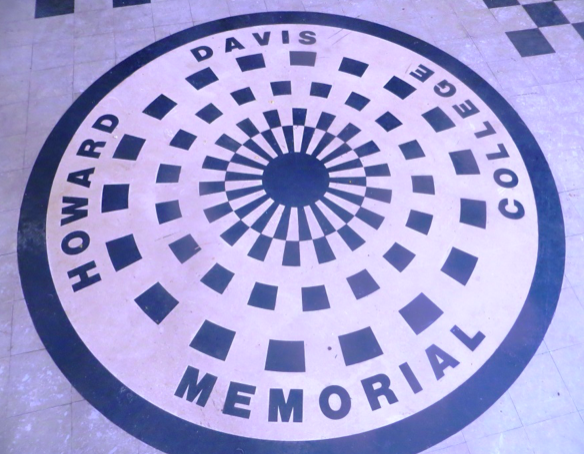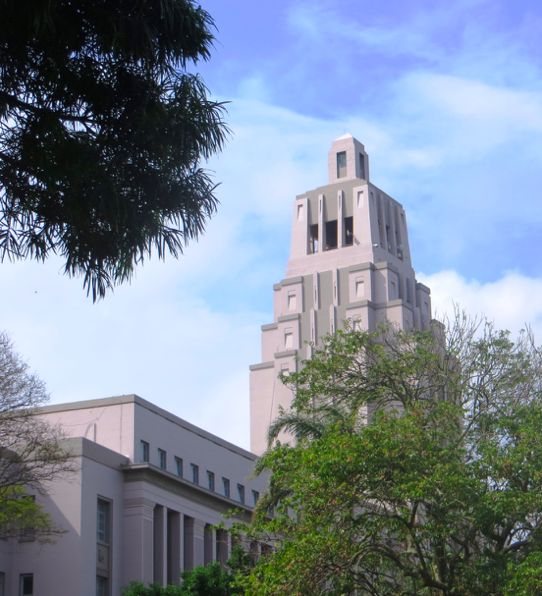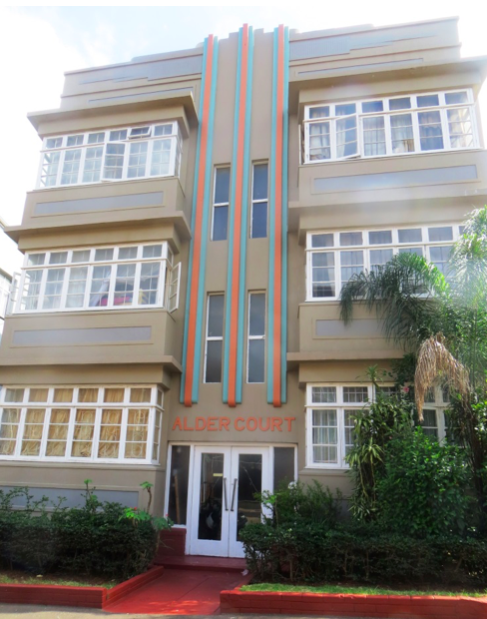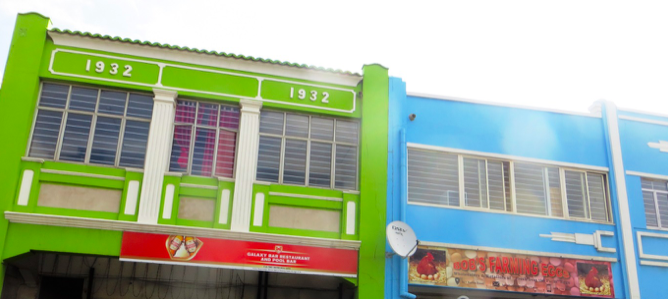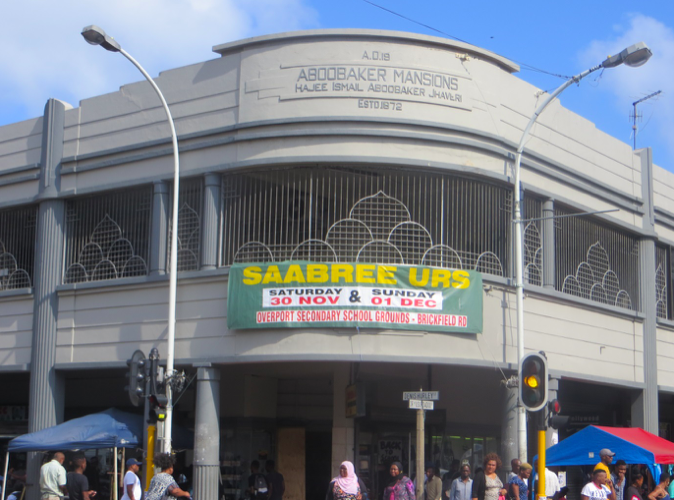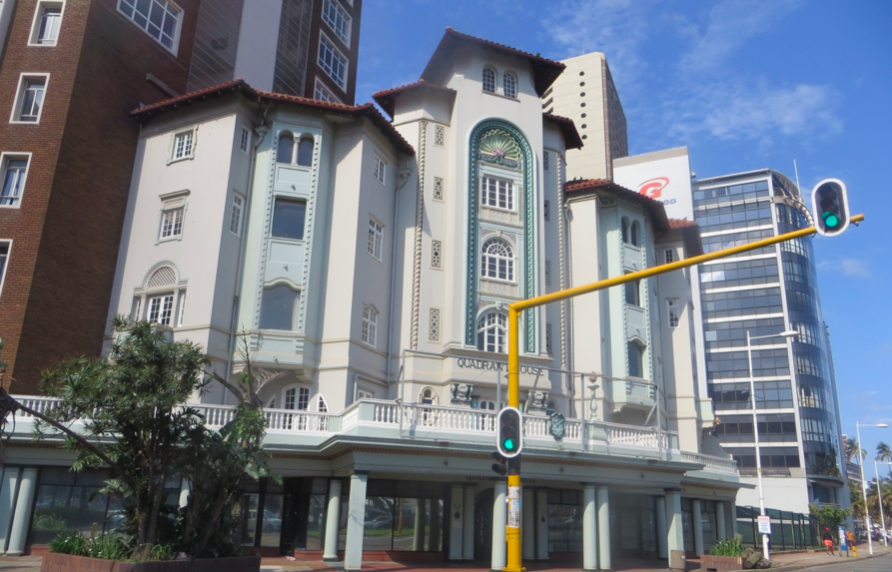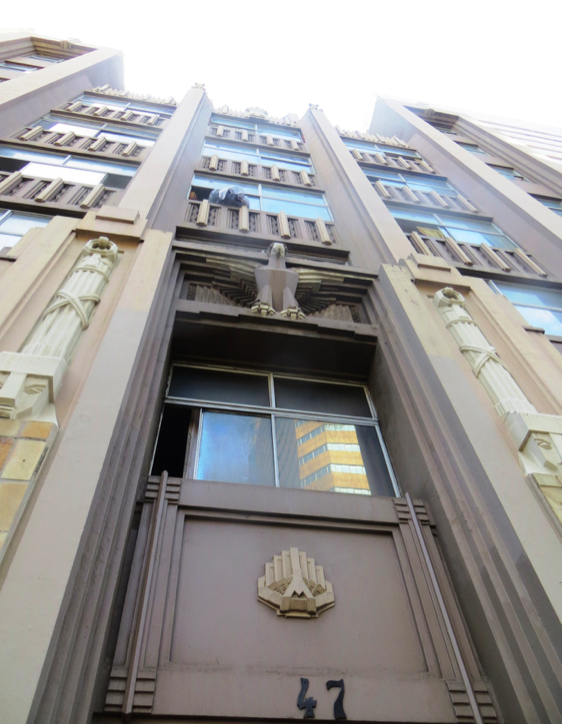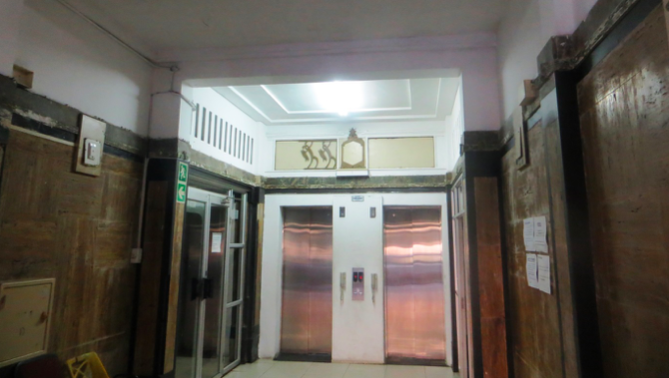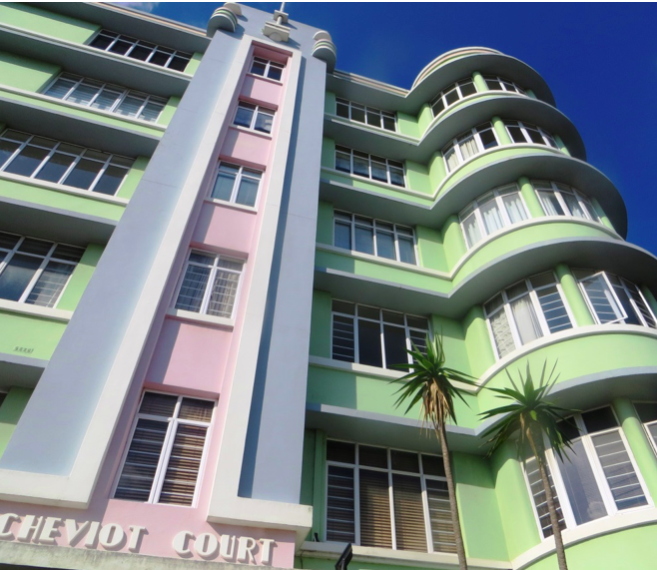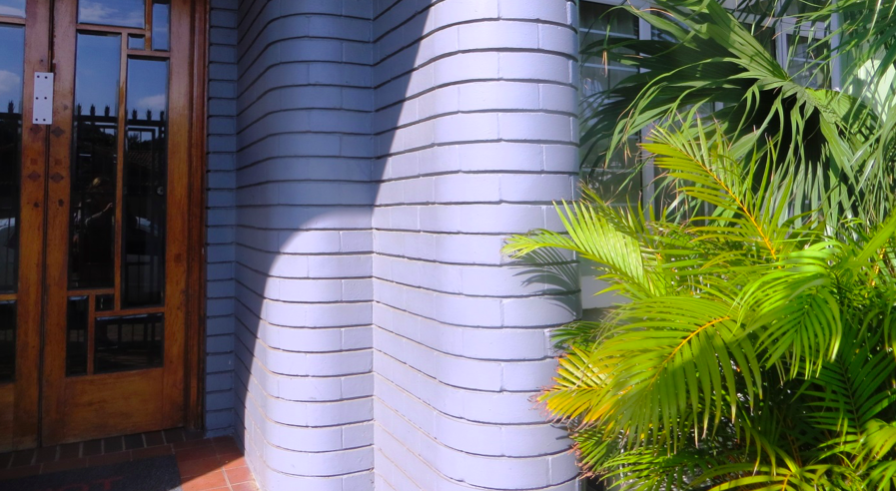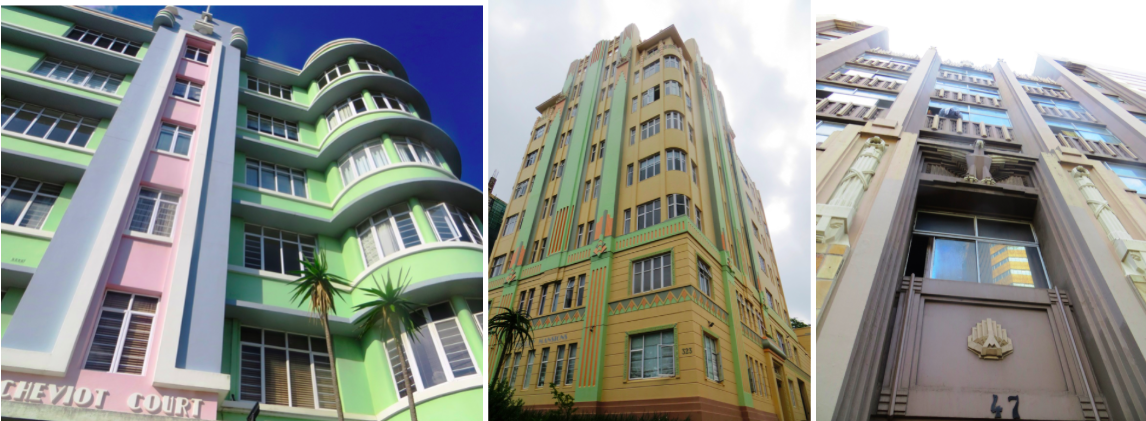
Disclaimer: Any views expressed by individuals and organisations are their own and do not in any way represent the views of The Heritage Portal. If you find any mistakes or historical inaccuracies, please contact the editor.
Last weekend my husband Keith and I spent a weekend in Durban as guests of the Durban Art Deco Society (DADS). I was there to deliver the lecture at the Annual General Meeting of the Society on the Sunday morning at the Phansi Museum but we had about 26 hours to see Durban and pleasure the pulse of the Indian Ocean city which had been Keith’s home town and my favourite teenage holiday destination. I knew Durban from my childhood sojourns and then family visits to the grandparents once we had settled in Johannesburg but in recent years our visits have dwindled so it was a pleasure to revive memories of places we knew decades ago and to gain fresh insights of a 21st century Durban.
A highlight of the weekend was the special Art Deco tour by professional tour guide, Shiney Bright and Professor Mike Mulholland of UKZN. Both are passionate about Durban’s Art Deco buildings and through the Durban Art Deco Society they are determined to promote, celebrate and save all that is Art Deco in Durban. There are more than 100 Art Deco buildings in Durban dating from the interwar period. Art Deco is such a distinctive style of angles, lines, geometry, decorative motifs in brick and plaster. Durban, because of the many apartment blocks, office blocks, homes and even simple shops, has been recognized internationally as a city where you can view Art Deco architecture with its many motifs and colours. Durban is an Art Deco city, though if you are keen on this style you will also find many buildings in Johannesburg and Springs.
Art Deco style was popular between 1925 and roughly 1940, though the style lingered into some post war inspirations. It was modern, flamboyant, international, glamourous and functional all at the same time. Durbanites were transported somewhere else in the world through artistic designs and motifs that recalled Pharaonic Egypt or Inca ziggurats. There are features of Durban with its Indian Ocean and its palm tree esplanade that remind me of Hollywood and the great movie age of the thirties in Los Angeles or transport one to Santa Monica with its Pier, funfair and end of route 66 boardwalk. Durban Art Deco has close parallels with Miami in Florida and Napier in New Zealand. It was an eclectic style that drew upon popular and topical themes and influenced design not only in architecture but also in furniture, ceramics, jewellery and even books.
Durban has a rich architectural heritage from colonial Victorian and Indian to an array of Hindu temples and Muslim mosques and on to the newer trends in modernist expression. But there is a certain whimsical appeal in the Art Deco style. What is remarkable is that so much of Durban’s Art Deco has survived and is now celebrated as a distinctive layer of heritage.
Mike and Shiney are knowledgeable and they and their fellow members of the small but active Art Deco Society in Durban offer advice about saving these treasured buildings and bringing them back to life with full colour glory. They guide owners on the right colour palette possibilities and combinations to enhance the forms and shapes so visible on facades and in interiors. They explain how detailing and lines can be foregrounded through colour. I was presented with a copy of their Art Deco City Architecture Guide. I am thrilled because I know how collectable and now rare this Durban guide is. Mike also presented me with the much fuller printed catalogue pages of the best 60 Durban Art Deco buildings, with neat grading of an A, B or C. We find as we drive that we have much to share in approaches to heritage in Jhb and Durban.
Guide cover
The unique feature of the best of Durban Art Deco are the careful colour selections used to emphasize and to contrast the lines, angles and three D look of Art Deco buildings. It’s the corners, angles, curves, discreet balconies and window frames that are picked out in glorious colour combinations – subtle lime green, pastel pink, pale lemon, mellow creams, faded blues and cheery turquoise. The Durban Art Deco Society advises owners, but also awards certificates for quality restoration.
Surrey Mansions on the Berea in Currie Road must be the jewel in the crown of Art Deco Durban. It is an apartment block of eight storeys, the architect was William H Barboure of Langton and Barboure. Mike’s notes describe the building as “one of the great Art Deco buildings… with detailing of imagination and sensitivity.“ It has richly varied stucco reliefs; you spot flying lions up above. The block is well maintained, an award winner with authentic colour schemes. Authenticity in colour is important. The Art Deco Society have their resource centre here in a utility room but as we climb the stairs I realize how much on a wing and a prayer that such buildings are saved when I notice the architectural context – a double storey period house next door and beyond a monstrosity of a high rise in a state of semi development. It must be those flying lions that save Surrey Mansions.
Surrey Mansions, Currie Road, Berea (Kathy Munro)
We head towards the UKZN campus and pass Berea Court, another Langton and Barbourne apartment block, dating from 1937 with a pink and shades of blue façade and decorative sunbursts in stucco.
Berea Court (Kathy Munro)
At the University of KZN main Campus we view Howard College and the neighbouring Memorial Tower building that houses the Library. The exterior of Howard College is not strikingly Art Deco (it is a classical building) but the interior has many deliberate Deco features. The story behind Howard College is poignant and heartrending and a feeling of sadness, mourning and loss creeps over as I think about the meaning and intent of these two buildings. In addition there is the state of desecration of the fronting King George V statue. It was not only Rhodes that fell in 2015 but here in Durban there was a call for King George V also to fall; George V the monarch and symbol of Empire who had visited South Africa in 1901 when he was the Duke of York as part of a grand Empire Tour (50 000 miles of travel on a map painted the then comfortable red of the British Empire).
Now fiery young students act, ignorant of history or even a thought as to why this 1940 statue of King George V was here and what it meant. Wars of long ago and the decades before their birth are ancient history best forgotten. Hence the wartime losses of Durban men and women in World War I and II are not remembered. I knew this political statement had been made in 2015 but the surprise was that the statue of King George V still stands in this disgraceful condition. Why? Is there a silent rebuke to the students of 4 years ago (who have probably moved on to jobs or graduate study); is it meant to remind the alumni for whom the history might have been contemporary and meaningful that the visible past can be written off with a pot of paint. I wondered why UKZN had not followed the example of UCT and simply removed or relocated King George. If it remains in place why not restore it or will that cause another student led despoiling. I reflected on the different styles and values of South African cities – King George V Street remains or you could purchase a King George V and Queen Mary medal on bid or buy, a 25 year silver jubilee Union of South African commemoration.
King George Statue 2015 (Artefacts)
King George Statue 2019 (Kathy Munro)
The statue dates back to 1940 and was a memorial to George V. Below is an image held in the archive of the Killie Campbell Museum which shows General Smuts at the unveiling of the statue.
Archive photos of the unveiling ceremony (Killie Campbell Museum)
The inauguration stone of Howard University College was laid by the Earl of Clarendon in 1931 as the representative of the monarch, King George V. In 1931 George V was the British King and emperor of the British empire which included South Africa as a self-governing dominion member country. The building had been donated and financed by the Davis family in memory of their son Howard Leopold who had been killed at the Battle of the Somme aged 21 in 1916. Howard served with the Highland Light Infantry and his grave is at the Etaples Cemetery in France. There is a whole poignant history here that relates both to Howard Davis and his parents Thomas Benjamin Frederick Davis and Minnie Davis. TBF Davis was born in 1867 and hailed from Jersey; he made his fortune in stevedoring in Durban and died in the city in 1942. The architect of Howard College was William Hirst. We were able to enter the foyer of Howard College and inspect some of the details – such as doorways, the dome, the strongly geometric staircase the gallery and windows.
Foyer floor (Kathy Munro)
Interior details (Kathy Munro)
Rather better recognized as an Art Deco building, though in fact it was built after the Second World War, is the Memorial Tower Building (the MTB) next to Howard College. The architects were Powers and Powers. The Memorial Tower Building, with its with its stepped narrowing symmetrical stepped sections, shows strong Art Deco style influences, was built to commemorate students of the University of Natal who had died in World War II. The building, which cost £235 000, was designed in 1947 and construction started in 1948. It was one of those long term projects built in stages and was finally completed in 1972. It was declared a National Monument under old National Monuments Council (NMC) legislation on 7 March 1986. Radford’s guide to Durban Architecture explains that the MTB lies on the axis of Smith Street (now Anton Lembede Street), a principal thoroughfare of the city. It was the second building on campus.
Memorial Tower Building (Kathy Munro)
Mike and Shiney then showed us a concentrated street of small Art Deco apartment blocks in Woodburn Place on the Berea. This is a gem of an Art Deco precinct of well-maintained and appreciated residential blocks. A streetscape of coherence and interest is formed by at least four buildings - Pavo Court, Alder Court, Deo Volante and Ellan Vanin - and gives a pleasing cohesion. These residential blocks were built at the end of the thirties. Three were apparently built for a company called Messrs Newfaze Properties (Pty) Ltd. A drawing by an M Vengan dated 9 March 1940 (Alder Court, 7 Woodburn Place – 6 apartments) has been identified but no further information about M Vengan is known. Alder Court is stylistically similar to Number 5, Deo Volente but with applied vertical and horizontal stucco relief and these reliefs are stressed as a feature of the building with pink and blue colours.
Alder Court (Kathy Munro)
The Dr Yusuf Dadoo Street area presents a cluster of another group of early 1930s Art Deco combination of business shops with residential quarters above. The lime green and the vivid sea blue are startling. Forget the shop signage and the DSTV dish and concentrate on some of the details. The unique group of buildings, and there are about 12, have been termed “Indo-African Deco”; nothing grand in design or building materials but the clever positioning of motifs, columns and colour contrasts make for visual effect and coherence. Trade outlets, and businesses opened from early hours to late at night with the convenience of family living above the shop. These properties have served the Durban Indian community well for nearly 90 years. By the 1930s Indian families had accumulated the funds to invest in income yielding properties of permanence and Art Deco style and charm.
A few of the buildings on Dr Yusuf Dadoo Street (Kathy Munro)
We then moved towards and then down Grey Street. The trick when viewing these buildings is to look up to first floor level, search out the motifs, remove the intervening add ons such as burglar barred balconies or the street furniture of a busy shopping corner and cheer the survival of these small city architectural gems and thank both current owners and the Durban Art Deco society for their preservation efforts.
Aboobaker Mansions is at the corner of Grey and Queen Streets; built in 1937 and described as "good classic Deco details and first floor balcony, supported on fluted columns that sweep around the street corner shading the side walk below”. It’s a grand Durban Indian name “Hajee Ismail Aboobaker Jhawer, established 1972". Generations of a Muslim family business endeavour and slow emerging prosperity is proudly etched in the name on the corner.
Aboobaker Mansions (Kathy Munro)
We head towards the Victoria Embankment. There are several rather grand Art Deco buildings, such as Victoria Mansions, often 6 or 7 storeys, though today they are dwarfed by the high rise skyscraper business blocks. One of my favourite buildings is Quadrant House located at 114 Victoria Embankment. It was designed by AA Ritchie-McKinlay in 1934. It is less strongly Art Deco and more Spanish colonial in style. It has been described as “flamboyant Spanish Revival“ and it would not look out of place on the Californian Pacific Coast. This architectural jewel was rejuvenated and conserved in 1989 and won the ISAA Natal Conservation award in 1989. It is still worth pausing to absorb the details. It was the shape of the site, a quarter circle on the corner of Victoria Embankment. It originally served as a residence for nautical trainees with shops at ground floor level. I have always loved this building and for me it conjures up seaside romance with that central scalloped shell motif. Unfortunately, its significance as a landmark building and site has been diminished by the high rise blocks. The ugly over arm traffic light is all wrong in trying to catch a photograph.
Quadrant House (Kathy Munro)
We stop on Aliwal Street (now called Samora Machel Street) to visit the Enterprise Building, numbers 47-53. It is also an AA Ritchie McKinlay building (erected in 1931) and much more overtly and gloriously Art Deco. It is across the road from the old Congregational Church (an Edwardian central city church) which is now a mosque. The Enterprise Building was and still is a residential building. It needs some tender loving care. The symbols, the eagle over the entrance and the fasces on the façade, echo European delusions of grandeur and Roman authority that had not yet been given a bad name by Mussolini and the Fascists. The eagle has been adopted as the logo of the Durban Art Deco society.
Enterprise House (Kathy Munro)
There have been changes in window frames and the interior foyer has lost some of its 1930s glamour while the shops at ground floor level no longer appeal to a smart Durban clientele. Security in the foyer does not seem at all interested in our enthusiasm for the “seen better days” decorative interior details.
Foyer of the Enterprise Building (Kathy Munro)
Our last stop on this special Art Deco tour is at Cheviot Court on the Berea, corner of Musgrave and Poynton Roads. The building is a beauty - once again for the detail and for the colour symphony of greens, pinks, mauves and blue. I love the wooden doors and the remarkable rounded brickwork at the entrance.
Cheviot Court (Kathy Munro)
Rounded brickwork at Cheviot Court (Kathy Munro)
It is described online as “A well maintained six-storey apartment block with notable flagpole and crest motifs. Semi circular pavilion form on southwest and horizontal sunshades. Good entrance. Redecorated in interesting colours.” I have not as yet identified the architect but our visit is certainly a homage to his imagination and style and to the current owners' commitment to preserve and celebrate that heritage.
My thanks to Mike and to Shiney for an enriching tour and of course two hours leaves us with a myriad of glimpsed and fleeting visual impressions of change and continuity on the Durban architectural scene. Durban looks and is good, despite the discontinuity and demographic pressures the city has triumphed to show off its style and its verve.
Kathy Munro is an Honorary Associate Professor in the School of Architecture and Planning at the University of the Witwatersrand and chair of the Johannesburg Heritage Foundation. She enjoyed a long career as an academic and in management at Wits University. She trained as an economic historian. She is an enthusiastic book person and has built her own somewhat eclectic book collection over 40 years. Her interests cover Africana, Johannesburg history, history, art history, travel, business and banking histories. She researches and writes on historical architecture and heritage matters. She is a member of the Board of the Johannesburg Heritage Foundation and is a docent at the Wits Arts Museum. She is currently working on a couple of projects on Johannesburg architects and is researching South African architects, war cemeteries and memorials. Kathy is a member of the online book community the Library thing and recommends this cataloging website and worldwide network as a book lover's haven.
References
- Dennis Radford. A Guide to the Architecture of Durban and Pietermaritzburg. (2002, David Philip)
- Roger C Fisher & Nicholas Clarke. Architectural Guide South Africa – chapter on Durban – My Durban by Nina Saunders. (Dom Publishers , 2014)
- Art Deco Durban. Durban City Architecture Guide – Durban Art Deco Society. 2014.
- Bennett, David, Adams, Sally, Brusse, Rob, A Guide to the History and Architecture of Durban, Natal. Architectural Heritage Committee,1987
- Various entries on the Artefacts website
- Durban Art Deco Society – Art Deco Route Map by Car, August 2009 - printed notes.
Comments will load below. If for any reason none appear click here for some troubleshooting tips. If you would like to post a comment and need instructions click here.

